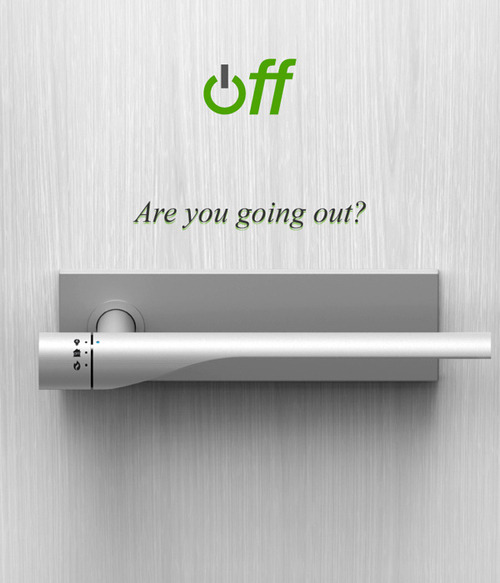A Nurse Has Heart Attack And Describes What She Felt Like When Having One
A nurse has heart attack and describes what she felt like when having one

I am an ER nurse and this is the best description of this event that I have ever heard.
FEMALE HEART ATTACKS
I was aware that female heart attacks are different, but this is description is so incredibly visceral that I feel like I have an entire new understanding of what it feels like to be living the symptoms on the inside. Women rarely have the same dramatic symptoms that men have… you know, the sudden stabbing pain in the chest, the cold sweat, grabbing the chest & dropping to the floor the we see in movies. Here is the story of one woman’s experience with a heart attack:
"I had a heart attack at about 10:30 PM with NO prior exertion, NO prior emotional trauma that one would suspect might have brought it on. I was sitting all snugly & warm on a cold evening, with my purring cat in my lap, reading an interesting story my friend had sent me, and actually thinking, ‘A-A-h, this is the life, all cozy and warm in my soft, cushy Lazy Boy with my feet propped up. A moment later, I felt that awful sensation of indigestion, when you’ve been in a hurry and grabbed a bite of sandwich and washed it down with a dash of water, and that hurried bite seems to feel like you’ve swallowed a golf ball going down the esophagus in slow motion and it is most uncomfortable. You realize you shouldn’t have gulped it down so fast and needed to chew it more thoroughly and this time drink a glass of water to hasten its progress down to the stomach. This was my initial sensation–the only trouble was that I hadn’t taken a bite of anything since about 5:00 p.m.
After it seemed to subside, the next sensation was like little squeezing motions that seemed to be racing up my SPINE (hind-sight, it was probably my aorta spasms), gaining speed as they continued racing up and under my sternum (breast bone, where one presses rhythmically when administering CPR). This fascinating process continued on into my throat and branched out into both jaws. ‘AHA!! NOW I stopped puzzling about what was happening – we all have read and/or heard about pain in the jaws being one of the signals of an MI happening, haven’t we? I said aloud to myself and the cat, Dear God, I think I’m having a heart attack! I lowered the foot rest dumping the cat from my lap, started to take a step and fell on the floor instead. I thought to myself, If this is a heart attack, I shouldn’t be walking into the next room where the phone is or anywhere else… but, on the other hand, if I don’t, nobody will know that I need help, and if I wait any longer I may not be able to get up in a moment.
I pulled myself up with the arms of the chair, walked slowly into the next room and dialed the Paramedics… I told her I thought I was having a heart attack due to the pressure building under the sternum and radiating into my jaws. I didn’t feel hysterical or afraid, just stating the facts. She said she was sending the Paramedics over immediately, asked if the front door was near to me, and if so, to un-bolt the door and then lie down on the floor where they could see me when they came in. I unlocked the door and then laid down on the floor as instructed and lost consciousness, as I don’t remember the medics coming in, their examination, lifting me onto a gurney or getting me into their ambulance, or hearing the call they made to St. Jude ER on the way, but I did briefly awaken when we arrived and saw that the radiologist was already there in his surgical blues and cap, helping the medics pull my stretcher out of the ambulance. He was bending over me asking questions (probably something like ‘Have you taken any medications?’) but I couldn’t make my mind interpret what he was saying, or form an answer, and nodded off again, not waking up until the Cardiologist and partner had already threaded the teeny angiogram balloon up my femoral artery into the aorta and into my heart where they installed 2 side by side stints to hold open my right coronary artery.
I know it sounds like all my thinking and actions at home must have taken at least 20-30 minutes before calling the paramedics, but actually it took perhaps 4-5 minutes before the call, and both the fire station and St Jude are only minutes away from my home, and my Cardiologist was already to go to the OR in his scrubs and get going on restarting my heart (which had stopped somewhere between my arrival and the procedure) and installing the stents. Why have I written all of this to you with so much detail? Because I want all of you who are so important in my life to know what I learned first hand.
1. Be aware that something very different is happening in your body, not the usual men’s symptoms but inexplicable things happening (until my sternum and jaws got into the act). It is said that many more women than men die of their first (and last) MI because they didn’t know they were having one and commonly mistake it as indigestion, take some Maalox or other anti-heartburn preparation and go to bed, hoping they’ll feel better in the morning when they wake up… which doesn’t happen. My female friends, your symptoms might not be exactly like mine, so I advise you to call the Paramedics if ANYTHING is unpleasantly happening that you’ve not felt before. It is better to have a ‘false alarm’ visitation than to risk your life guessing what it might be! 2. Note that I said ‘Call the Paramedics.’ And if you can take an aspirin. Ladies, TIME IS OF THE ESSENCE! Do NOT try to drive yourself to the ER - you are a hazard to others on the road. Do NOT have your panicked husband who will be speeding and looking anxiously at what’s happening with you instead of the road. Do NOT call your doctor – he doesn’t know where you live and if it’s at night you won’t reach him anyway, and if it’s daytime, his assistants (or answering service) will tell you to call the Paramedics. He doesn’t carry the equipment in his car that you need to be saved! The Paramedics do, principally OXYGEN that you need ASAP. Your Dr. will be notified later. 3. Don’t assume it couldn’t be a heart attack because you have a normal cholesterol count. Research has discovered that a cholesterol elevated reading is rarely the cause of an MI (unless it’s unbelievably high and/or accompanied by high blood pressure). MIs are usually caused by long-term stress and inflammation in the body, which dumps all sorts of deadly hormones into your system to sludge things up in there. Pain in the jaw can wake you from a sound sleep. Let’s be careful and be aware. The more we know the better chance we could survive to tell the tale.“
Reblog, repost, Facebook, tweet, pin, email, morse code, fucking carrier pigeon this to save a life! I wish I knew who the author was. I’m definitely not the OP, actually think it might be an old chain email or even letter from back in the day. The version I saw floating around Facebook ended with “my cardiologist says mail this to 10 friends, maybe you’ll save one!” And knew this was way too interesting not to pass on.
More Posts from Youaurendenial and Others






Here’s some cardio lecture crammed into a gif. >_> You see I DO STUDY!!
I tried to match the gif’s frame rate timing to a real resting heartbeat, so if you’re sitting at a computer this might match you! The rate for this heart is 72 bpm. (unless it’s lagging. please do not match the lagging heartbeat, only zombies do that.)
A Space Odyssey: 21 Years of Searching for Another Earth
There are infinite worlds both like and unlike this world of ours. We must believe that in all worlds there are living creatures and plants and other things we see in this world. – Epicurus, c. 300 B.C.

Are we alone? Are there other planets like ours? Does life exist elsewhere in the universe?
These are questions mankind has been asking for years—since the time of Greek philosophers. But for years, those answers have been elusive, if not impossible to find.
The month of October marks the 21st anniversary of the discovery of the first planet orbiting another sun-like star (aka. an exoplanet), 51 Pegasi b or “Dimidium.” Its existence proved that there were other planets in the galaxy outside our solar system.*

Even more exciting is the fact that astronomers are in hot pursuit of the first discovery of an Earth-like exoplanet orbiting a star other than the sun. The discovery of the so-called “blue dot” could redefine our understanding of the universe and our place in it, especially if astronomers can also find signs that life exists on that planet’s surface.
Astronomy is entering a fascinating era where we’re beginning to answer tantalizing questions that people have pondered for thousands of years.

Are we alone?
In 1584, when the Catholic monk Giordano Bruno asserted that there were “countless suns and countless earths all rotating around their suns,” he was accused of heresy.

But even in Bruno’s time, the idea of a plurality of worlds wasn’t entirely new. As far back as ancient Greece, humankind has speculated that other solar systems might exist and that some would harbor other forms of life.
Still, centuries passed without convincing proof of planets around even the nearest stars.

Are there other planets like ours?
The first discovery of a planet orbiting a star similar to the sun came in 1995. The Swiss team of Michel Mayor and Didier Queloz of Geneva announced that they had found a rapidly orbiting gas world located blisteringly close to the star 51 Pegasi.

This announcement marked the beginning of a flood of discoveries. Exotic discoveries transformed science fiction into science fact:
a pink planet
worlds with two or even three suns
a gas giant as light as Styrofoam
a world in the shape of an egg
a lava planet

But what about another Earth?
Our first exoplanet mission**, Kepler, launched in 2009 and revolutionized how astronomers understand the universe and our place in it. Kepler was built to answer the question—how many habitable planets exist in our galaxy?

And it delivered: Thousands of planet discoveries poured in, providing statistical proof that one in five sun-like stars (yellow, main-sequence G type) harbor Earth-sized planets orbiting in their habitable zones– where it’s possible liquid water could exist on their surface.

Now, our other missions like the Hubble and Spitzer space telescopes point at promising planetary systems (TRAPPIST-1) to figure out whether they are suitable for life as we know it.

Does life exist elsewhere in the universe?
Now that exoplanet-hunting is a mainstream part of astronomy, the race is on to build instruments that can find more and more planets, especially worlds that could be like our own.

Our Transiting Exoplanet Survey Satellite (TESS), set for launch in 2017-2018, will look for super-Earth and Earth-sized planets around stars much closer to home. TESS will find new planets the same way Kepler does—via the transit method—but will cover 400 times the sky area.

The James Webb Space Telescope, to launch in 2018, wil be our most powerful space telescope to date. Webb will use its spectrograph to look at exoplanet atmospheres, searching for signs of life.

We still don’t know where or which planets are in the habitable zones of the nearest stars to Earth. Searching out our nearest potentially habitable neighbors will be the next chapter in this unfolding story.

*The first true discovery of extrasolar planets was actually a triplet of dead worlds orbiting the remains of an exploded star, called a pulsar star. Two of three were found by Dr. Alexander Wolszczan in 1992– a full three years before Dimidium’s discovery. But because they are so strange, and can’t support life as we know it, most scientists would reserve the “first” designation for a planet orbiting a normal star.
** The French CoRoT mission, launched in 2006, was the first dedicated exoplanet space mission. It has contributed dozens of confirmed exoplanets to the ranks and boasts a roster of some of the most well-studied planets outside our solar system.
To stay up-to-date on our latest exoplanet discoveries, visit: https://exoplanets.nasa.gov
Make sure to follow us on Tumblr for your regular dose of space: http://nasa.tumblr.com
true space facts
if u look up there it is
36 Things You Obviously Need In Your New Home
A Fire Pit IN THE POOL

A Door That Turns into a Ping-Pong Table

Chilled Produce Drawers in the Kitchen

A Wine Cellar Trap Door

A Sleepover Room

A Door Handle That Automatically Turns Off Electricity and Gas When You Leave

A Swing-Set Dining Table

A Built-In TV for the Bathtub

A Glass-Encased Fireplace

A Loft Hammock

A Hot Tub That Flows from the Inside to Outside

A Huge Round Bedroom Window

A Stained-Glass Door

A Library Staircase/Slide

A Bone-Shaped Pool for Your Dog


its time for the tantrum hole
A lot of people ask me what my biggest fear is, or what scares me most. And I know they expect an answer like heights, or closed spaces, or people dressed like animals, but how do I tell them that when I was 17 I took a class called Relationships For Life and I learned that most people fall out of love for the same reasons they fell in it. That their lover’s once endearing stubbornness has now become refusal to compromise and their one track mind is now immaturity and their bad habits that you once adored is now money down the drain. Their spontaneity becomes reckless and irresponsible and their feet up on your dash is no longer sexy, just another distraction in your busy life. Nothing saddens and scares me like the thought that I can become ugly to someone who once thought all the stars were in my eyes.










Brooklyn Nine-Nine s03e16

The King


Introducing Human Tears - STAY CRYDRATED!
More stuff like this on Facebook | Instagram
-
 mental-mona reblogged this · 2 weeks ago
mental-mona reblogged this · 2 weeks ago -
 spinjitzunerd78 liked this · 2 weeks ago
spinjitzunerd78 liked this · 2 weeks ago -
 sapphyxiate liked this · 2 weeks ago
sapphyxiate liked this · 2 weeks ago -
 terminallycagey liked this · 2 weeks ago
terminallycagey liked this · 2 weeks ago -
 ceonixx reblogged this · 2 weeks ago
ceonixx reblogged this · 2 weeks ago -
 doodle-bopper reblogged this · 2 weeks ago
doodle-bopper reblogged this · 2 weeks ago -
 doodle-bopper liked this · 2 weeks ago
doodle-bopper liked this · 2 weeks ago -
 jastrzwolvar liked this · 2 weeks ago
jastrzwolvar liked this · 2 weeks ago -
 lesbianfruitbat reblogged this · 2 weeks ago
lesbianfruitbat reblogged this · 2 weeks ago -
 lesbianfruitbat liked this · 2 weeks ago
lesbianfruitbat liked this · 2 weeks ago -
 maithesnail reblogged this · 2 weeks ago
maithesnail reblogged this · 2 weeks ago -
 maithesnail liked this · 2 weeks ago
maithesnail liked this · 2 weeks ago -
 vivificanousprime liked this · 2 weeks ago
vivificanousprime liked this · 2 weeks ago -
 aocean-21 reblogged this · 2 weeks ago
aocean-21 reblogged this · 2 weeks ago -
 ur-local-wolf-boy liked this · 2 weeks ago
ur-local-wolf-boy liked this · 2 weeks ago -
 default-f0x reblogged this · 2 weeks ago
default-f0x reblogged this · 2 weeks ago -
 default-f0x liked this · 2 weeks ago
default-f0x liked this · 2 weeks ago -
 dr-jorbius liked this · 2 weeks ago
dr-jorbius liked this · 2 weeks ago -
 frogwithastrawberry reblogged this · 2 weeks ago
frogwithastrawberry reblogged this · 2 weeks ago -
 frogwithastrawberry liked this · 2 weeks ago
frogwithastrawberry liked this · 2 weeks ago -
 kiku91 reblogged this · 2 weeks ago
kiku91 reblogged this · 2 weeks ago -
 phantommermaidqueen reblogged this · 2 weeks ago
phantommermaidqueen reblogged this · 2 weeks ago -
 phantommermaidqueen liked this · 2 weeks ago
phantommermaidqueen liked this · 2 weeks ago -
 iobsesswaytoomuch reblogged this · 2 weeks ago
iobsesswaytoomuch reblogged this · 2 weeks ago -
 iobsesswaytoomuch liked this · 2 weeks ago
iobsesswaytoomuch liked this · 2 weeks ago -
 genderfluidblob reblogged this · 2 weeks ago
genderfluidblob reblogged this · 2 weeks ago -
 chickenclan reblogged this · 2 weeks ago
chickenclan reblogged this · 2 weeks ago -
 chickenclan liked this · 2 weeks ago
chickenclan liked this · 2 weeks ago -
 destinywillowleaf reblogged this · 2 weeks ago
destinywillowleaf reblogged this · 2 weeks ago -
 tonystarkwasrobbed reblogged this · 2 weeks ago
tonystarkwasrobbed reblogged this · 2 weeks ago -
 tonystarkwasrobbed liked this · 2 weeks ago
tonystarkwasrobbed liked this · 2 weeks ago -
 rainbow-flavoured-skittles reblogged this · 2 weeks ago
rainbow-flavoured-skittles reblogged this · 2 weeks ago -
 fanficmaniatic reblogged this · 2 weeks ago
fanficmaniatic reblogged this · 2 weeks ago -
 spinningaroundofmythoughts reblogged this · 2 weeks ago
spinningaroundofmythoughts reblogged this · 2 weeks ago -
 spinningaroundofmythoughts liked this · 2 weeks ago
spinningaroundofmythoughts liked this · 2 weeks ago -
 navetpetit liked this · 3 weeks ago
navetpetit liked this · 3 weeks ago -
 need-coffee liked this · 3 weeks ago
need-coffee liked this · 3 weeks ago -
 redroses694 liked this · 3 weeks ago
redroses694 liked this · 3 weeks ago -
 elowhinn liked this · 3 weeks ago
elowhinn liked this · 3 weeks ago -
 amistakeofnature liked this · 3 weeks ago
amistakeofnature liked this · 3 weeks ago -
 avatar-mikazuki reblogged this · 3 weeks ago
avatar-mikazuki reblogged this · 3 weeks ago -
 warabito reblogged this · 3 weeks ago
warabito reblogged this · 3 weeks ago -
 warabito liked this · 3 weeks ago
warabito liked this · 3 weeks ago -
 avatar-mikazuki reblogged this · 3 weeks ago
avatar-mikazuki reblogged this · 3 weeks ago -
 googlepirates liked this · 3 weeks ago
googlepirates liked this · 3 weeks ago -
 doeprince-blog reblogged this · 3 weeks ago
doeprince-blog reblogged this · 3 weeks ago -
 doeprince-blog liked this · 3 weeks ago
doeprince-blog liked this · 3 weeks ago -
 lightninja38 reblogged this · 4 weeks ago
lightninja38 reblogged this · 4 weeks ago -
 women-with-powerful-auras reblogged this · 1 month ago
women-with-powerful-auras reblogged this · 1 month ago -
 garry34 liked this · 1 month ago
garry34 liked this · 1 month ago
